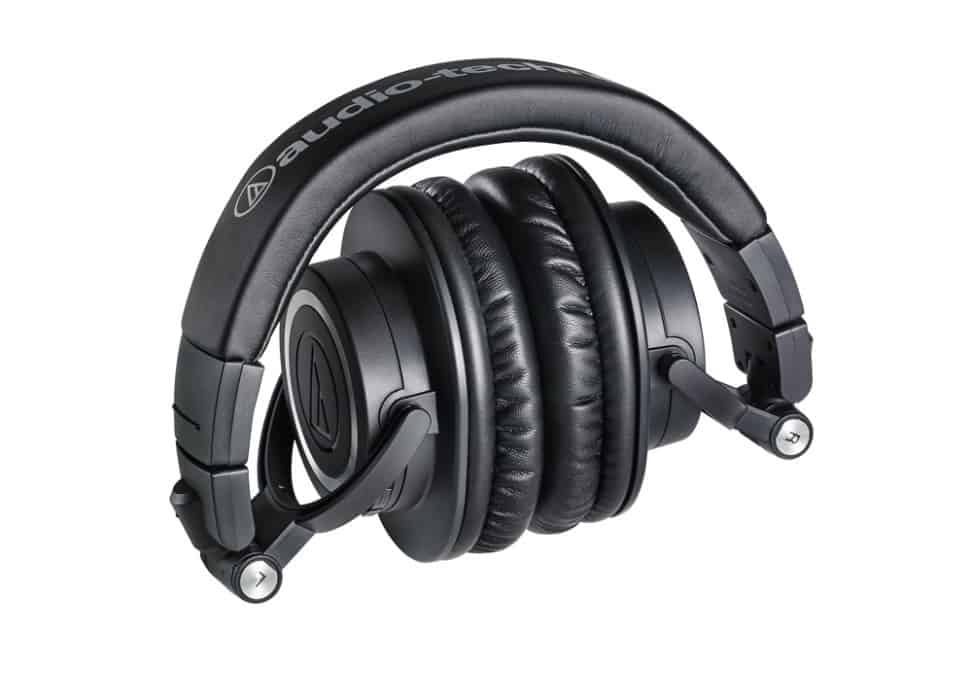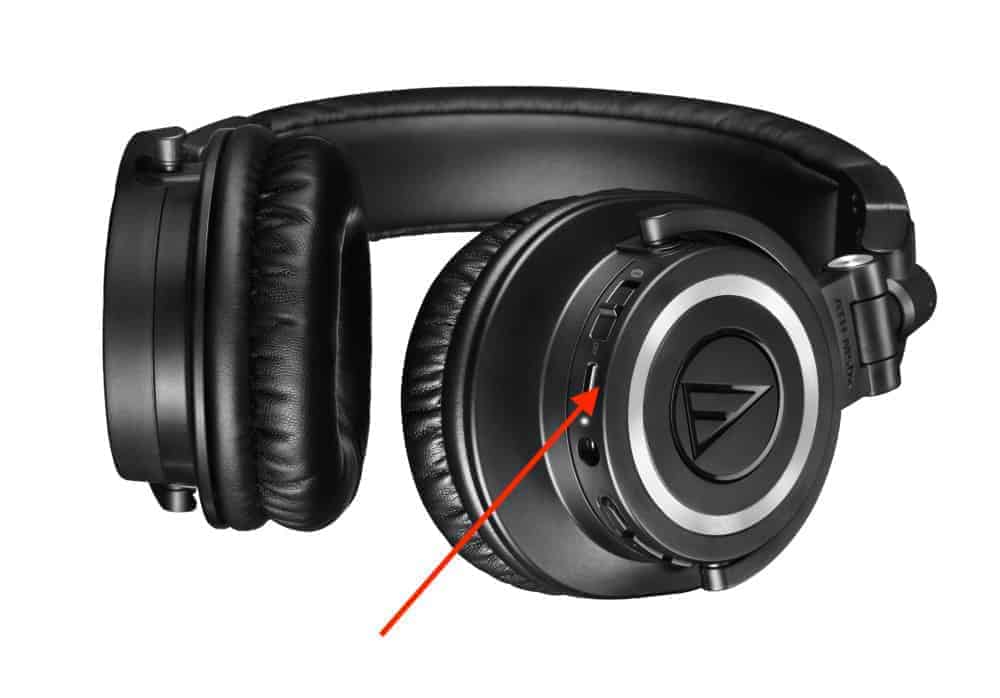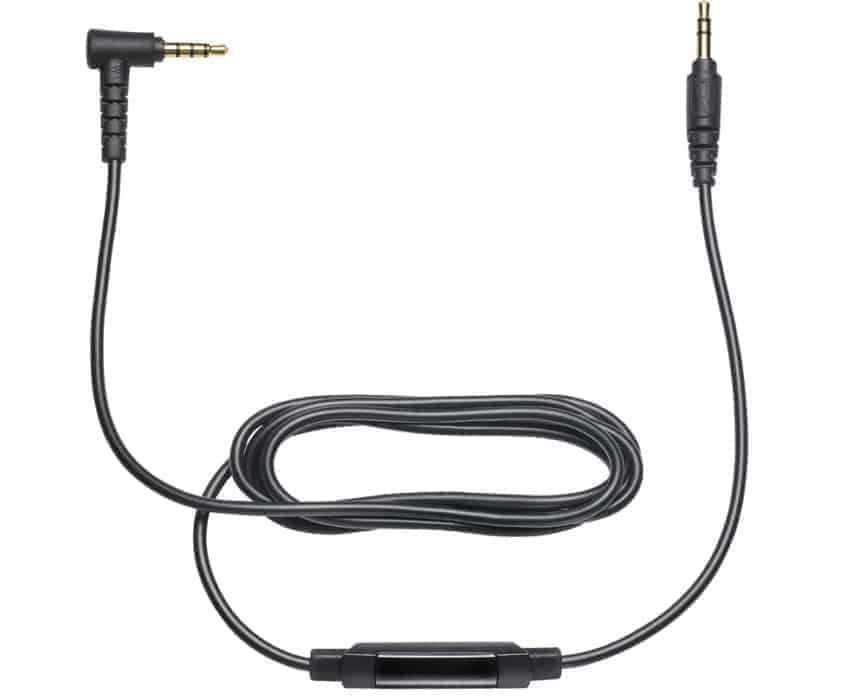As an Amazon Associate, I earn from qualifying purchases. Additionally, I earn a commission through each purchase made on Amazon, Clickbank, zZounds, Plugin Boutique, Plugin Fox, Thomann, Jam Play, and Punkademic from one of my links.
I can’t lie to you.
I’m a bit wary of recommending Bluetooth headphones for music production, just because users often complain about latency.
In fact, as I explained in my latency article, it’s often the number one reason that music producers have lag when they’re first starting out in music production. Unfortunately, BlueTooth technology is designed in such a way where a consequence is compressed audio, and thus, a loss in quality. Additionally, the compression process typically causes the much-dreaded latency.
With that said, with Audio Technica’s ATH-M50xBT from Amazon, you have the option of using a wired connection too.
In other words, you could have them function as Bluetooth when you’re on the go and just want casual listening headphones, and then you could hook them up through a wired connection whenever you want to mix.
The best Bluetooth headphones for music production are the Audio Technica ATH-M50xBT, due to their studio-level quality, overall value and quality, and interchangeability between Bluetooth and wired connection.

As I mentioned before, if you’re going to purchase a pair of BlueTooth headphones for music production, I would consider a pair such as these where you can switch between BlueTooth and wired, that way if you run into issues, you’ll be Ok. This is one of the things I like about iLoud’s Micro Monitors (from Amazon) as well
Interestingly, Amazon is supposedly the number one seller of the Audio Technica ATH-M50xBT and has been for years. Some people claim that you can’t find them anywhere else, but that’s not true, I’ve seen them in stores before.
Using Bluetooth headphones isn’t the greatest idea for music production, due to the fact that you’re probably going to get some latency, however, if you want to use them for other purposes other than recording, then you should be fine.
In the case that you’re simply going to use them for mixing, mastering, arranging, but not specifically for recording or general production, say, for instance, writing a riff on your MIDI keyboard, then Bluetooth headphones will work fine.
The same rule applies to MIDI keyboards, in the sense that they’re not going to work great for real-time recording due to latency issues (by the way, grab PianoForAll from their website if you want to learn the ins-and-outs of the keyboard).
Admittedly, I don’t actually own these headphones, which is one of the reasons why you may notice this particular article looks different from my other ones.
I do own, however, the ATH-M50x, and I can’t imagine the Bluetooth ones are much different, especially when using the wired connection.
The Audio Technica ATH-M50x
The Audio Technica ATH-M50x headphones are typically some of the most commonly suggested headphones on the market. For that reason, I’ve seen them everywhere now.

In the last few years, I’ve noticed that even a lot of casual listeners wear these headphones when they’re walking around during the day listening to music, or even people on the train.
The first time Audio Technica released their ATH-M50 headphones was around thirteen years ago in February 2007.
Since then, they’ve become arguably the most popular headphones on the market for almost everybody, including DJs, producers, general musicians, and so on and so forth.
The primary reason for their popularity is the incredible sound coupled with a decent price.
The low-end on the ATH-M50xBT sounds nice and clear on account of the closed-back structure, in addition to very clean and clear mid-range frequencies.
It’s worth mentioning that these headphones are not specifically catered to bass-heads, people who are looking for the most amount of bass response as possible.
They’re a cross between casual listening and studio headphones, which means they’re supposed to be a bit more balanced than Dre Beats, for instance.
The benefit of using studio level headphones is that there isn’t supposed to be a boost in any particular area of the frequency spectrum, in other words, you get a more accurate picture of what the sound truly is, rather than a distorted version with boosted lows or sparkling clean highs.
This is one of the issues with using a pair of headphones like Dre Beats for mixing, mastering, and recording.
You’re not getting an accurate representation of what the music really sounds like.
You’re getting a boosted low-end.
While it may not seem like a big deal, when you go to listen to the mix in the car, you may find there isn’t enough bass, because the headphones had you tricked into believing there was more bass than there really was.
Design and Features
The left side of the headphones is where all of the technology lies.

For instance, you have the ability to turn Bluetooth on and off, in addition to three other buttons for adjusting the volume and one for skipping back and forth between tracks.
It also has the ability to hit “play” or “pause” on phone calls, which is a handy little feature.
Furthermore, the left-hand side of the unit comes with the outlets for Micro-USB charging with a standard 3.5 mm headphone wire. These come with the headphones, as well as a carrying case.
The last thing worth mentioning is that it also has a speech-recognition assistant, which means you can talk to them, however, this is actually included in the cable that it comes with.

There’s no question that these headphones are actually marketed toward people who plan on traveling with them. So if you’re on the road, and want to work on your music, then these are more suited to you.
The regular Audio Technica ATH-M50x headphones are connected to the wire a bit differently, using a push-and-twist set-up, however, these headphones don’t come with that, but it still doesn’t connect in the typical way.
The manufacturers claim that they have a 40-hour battery life, but it’s hard to say how long they really last. iPhones claim to have a long battery life as well, although, I’ve heard that newer ones like this one from Amazon are better for battery life.
There is a “beeping” sound if the battery is close to empty.
How To Set Up The Audio Technica ATH-M50xBT
BlueTooth set-up has become way easier in the last few years, and these headphones are no different.
Similar to how you set up iLoud Micro Monitors which I explored in my guide, you just have to turn the switch on the side of the headphones, and they’ll instantly become discoverable by your device.
How They Sound
As I’ve already mentioned in this article, the mid-range, which is arguably the most important aspect of headphones, sounds pretty great, with vocals and guitars sounding clear and bright.
Some people argue that there is somewhat of a boosted bass response in these headphones, but I didn’t hear it when I tried them.
Specifications Of The ATH-M50x Headphones
Frequency Response: 15Hz – 28,000kHz
Sensitivity: 99dB/Mw
Battery Life: 40 Hours (roughly)
Hours to Charge: 40 Hours (roughly)
Weight: 310 grams
Design: Closed-back
Range: 10m (or so)
Cons of Using The Audio Technica ATH-M50xBT
No Noise Cancelation
I would argue that the number one con of using the Audio Technica ATH-M50xBT is the fact they’re not noise-canceling like some of Audio Technica’s other headphones. Even my pair of ATH-M30x are noise-canceling.
It’s a bit disappointing that they didn’t design these headphones to fight against background noise, but frankly, they should be fine if you’re using them in your home studio or in a regular studio.
Some Argue They’re Bass-Heavy
While I think they sound just fine on the low-end, some people argue that there’s too much bass in these, which would make sense, because it seems like Audio Technica has marketed these more so to casual consumers, rather than producers.
Comfort
The Audio Technica ATH-M50xBT tends to warm up your head, so if you’re the type of person who gets hot, and is easily bothered by this type of issue than you might want to go somewhere else for your headphone needs.
Bluetooth Isn’t Ideal For Music Production
Like I’ve already mentioned, Bluetooth headphones are not ideal for music production because of the loss in quality as well as the potential for latency.
Conclusion
All-in-all, I have to say that you should be wary about purchasing a pair of BlueTooth headphones for music production, because of the issues that I mentioned above, including a loss in quality as a consequence of the compressed audio, as well as the potential for annoying latency.
However, if you do want to get a pair, the Audio Technica ATH-M50xBT is going to work, especially considering you have the option to use the wired option.

 Written By :
Written By :